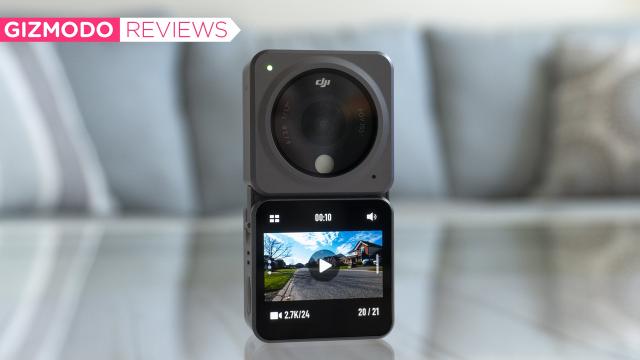Action cameras have continued to grow in popularity for the simple reason that their compact size makes them easy to mount, perch, and hide almost anywhere. But how do you shrink action cameras even further without sacrificing key functionality? DJI’s solution is a new magnetic modular design that assembles like action cam building blocks, and while it’s a clever approach, it also comes with its own challenges.
With everyone streaming themselves doing everything on social media, being able to see what a camera pointed at yourself is recording has become an important feature. Front-facing cameras make that easy on a smartphone, but for action cameras the solution has been to add multiple displays, like the DJI Osmo Action introduced a few years back, and the GoPro Hero9 did last year with small LCDs situated next to the lens. The problem with extra screens is that they add bulk to a camera that’s supposed to be small, and yet another battery-draining feature. But what if you could add a front-facing screen only when you needed it? That’s the question the new DJI Action 2 asks and attempts to answer with a radically different design than its predecessor.
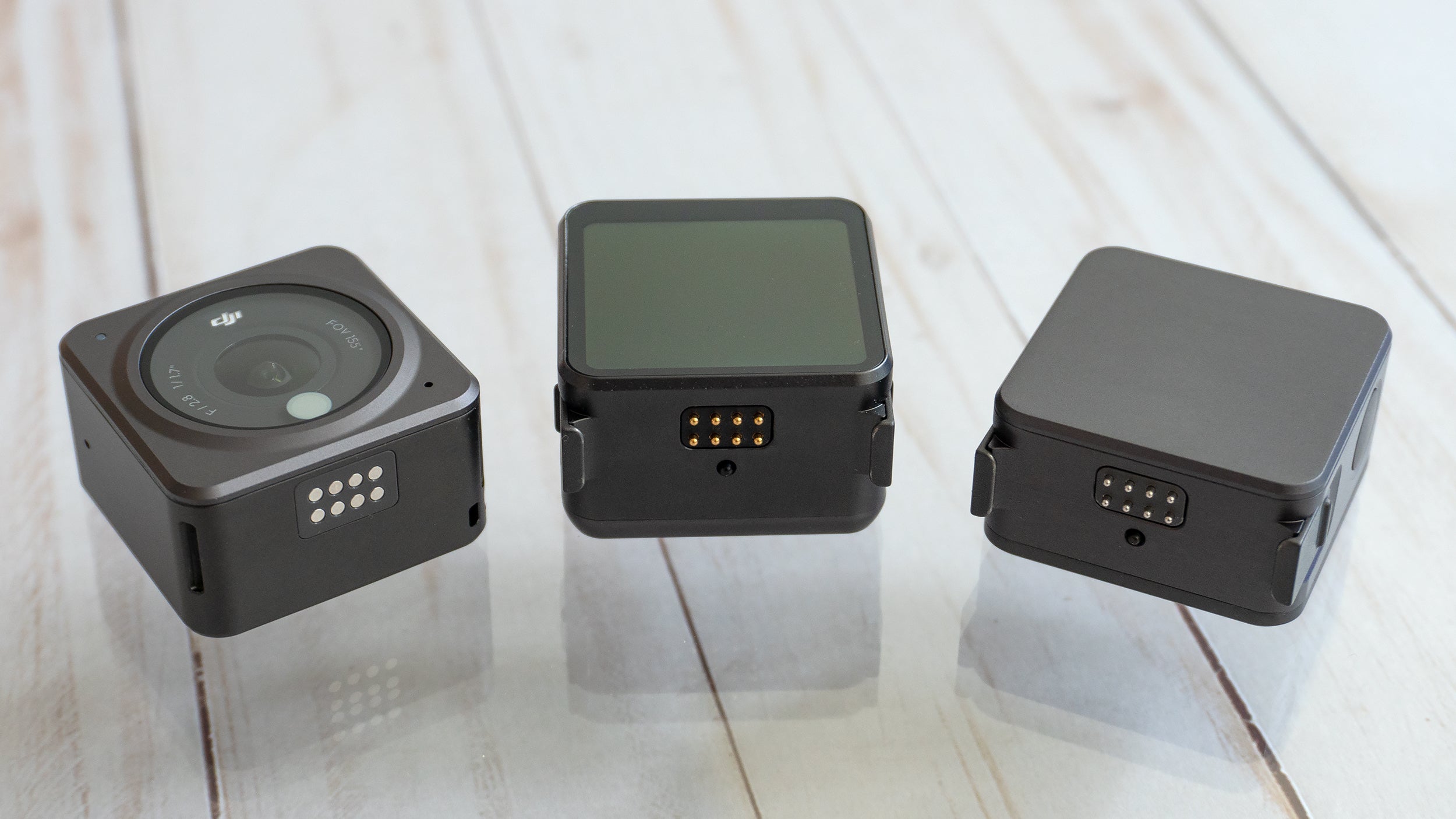
DJI Action 2
WHAT IS IT?
A modular 4K action camera with expanded functionality through the use of magnetically attached expansion modules.
PRICE
$US399 ($555) for the Power Combo set, $US519 ($722) for the Dual-Screen Combo that includes the front-facing screen module.
LIKE
The magnets that hold the modules together are incredibly strong, and there's a lot of potential to expand the functionality of the action cam assuming DJI will remain invested in the platform it's created and keep the modules coming.
DISLIKE
Pulling footage off the Action 2 with a USB-C cable requires one of the modules to be attached, and we had some unsolvable software issues with wirelessly streaming content from the camera to a smartphone.
A Truly Tiny Action Camera
The Action 2 is reminiscent of the old GoPro Session but feels even smaller in hand. It’s about as minimally tiny as an action camera can get. Measuring just 1.5 inches on each side and about half as deep, it still manages to feel like it’s built Tonka-tough with a sturdy metal housing that’s satisfyingly heavy given the camera’s size.
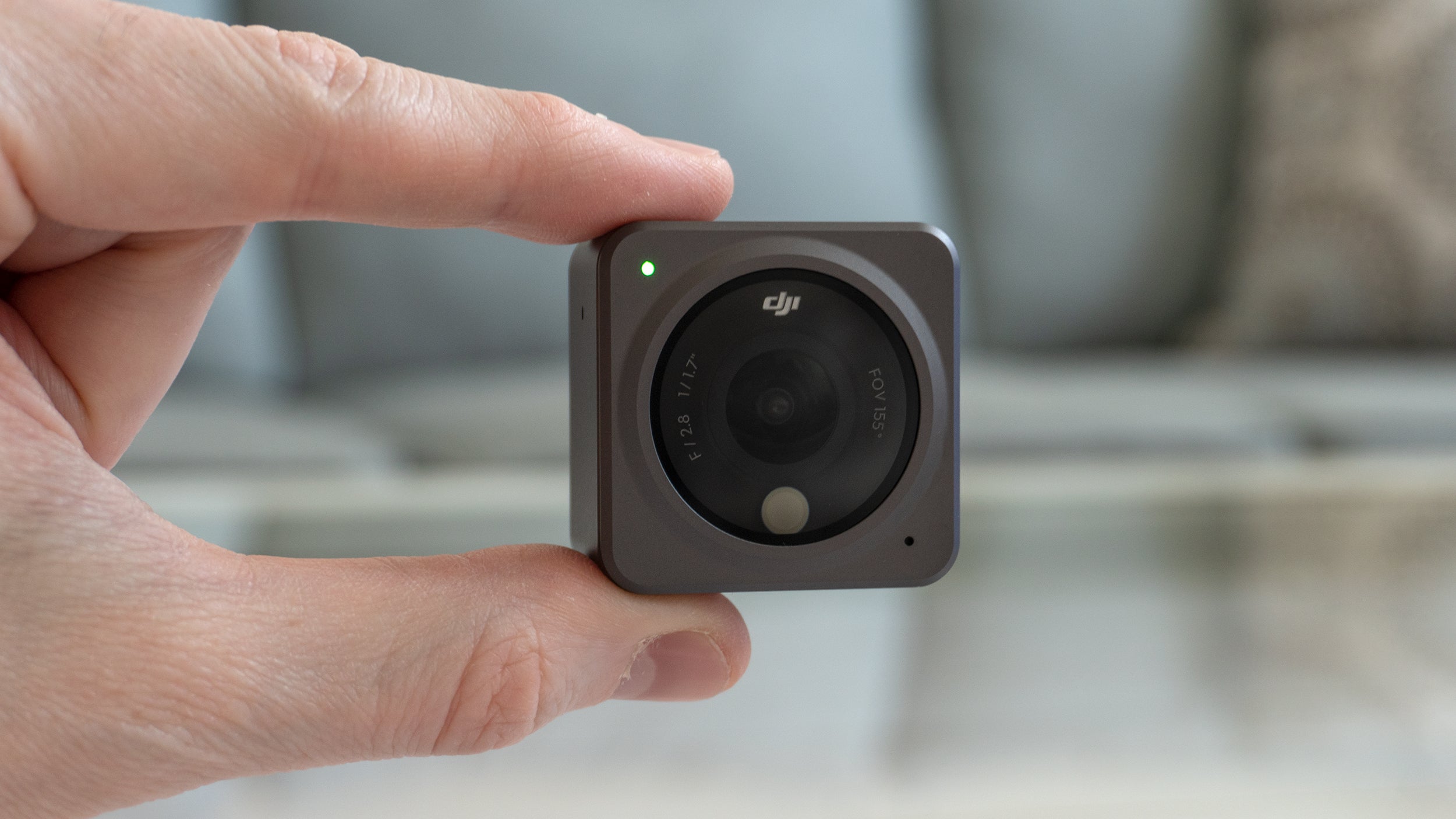
The Action 2 features a 12-MP 1/1.7-inch CMOS sensor paired with a wide-angle lens, giving it a very wide 155-degree field of view at a fixed aperture of f/2.8. There’s also a colour temperature sensor on the front allowing the camera to handle white balance adjustments on its own based on the ambient lighting, but users can also set the colour temperature manually, or opt for the Action 2’s D-Cinelike recording mode so colour grading adjustments can be made in post-production later.
Given the limitations of rechargeable batteries, it’s hard to imagine action cameras getting much smaller than this right now.
Beautiful Screen, Difficult Interface
On top of the Action 2 camera module is a large button that’s used for cycling power, starting or stopping recording, and as a shutter for capturing still images. Internally there’s a rechargeable battery good for about 70 minutes of recording and 32GB of storage. On the back you’ll find a high-res 1.76-inch OLED touchscreen that’s protected with a Gorilla Glass covering.
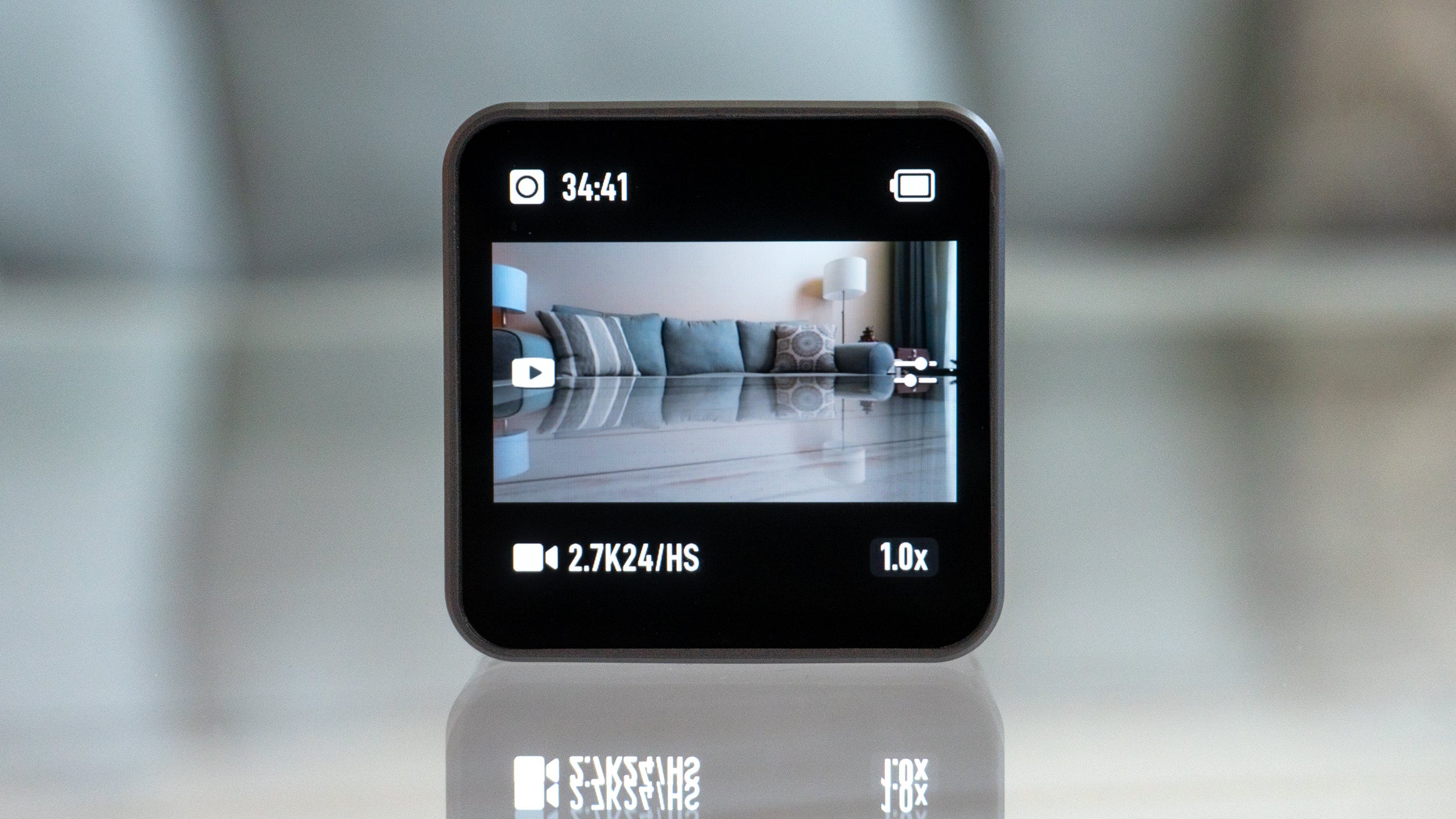
Even in bright sunlight the screen always remains highly visible, and through a less-than-intuitive menu system you can configure every setting for the camera, including resolution, frame rates, shutter speed, colour temperature, stabilisation, and file management. You can even play back captured clips — although without audio. Having access to all of that functionality on-camera is certainly convenient, but finding your way around the menu system takes some practice, as does knowing which way you’re supposed to flick the screen to cycle through various settings and options. Further complicating things is that you can’t save your settings as a profile or a preset for quick access later.
Configuring the camera is much easier through the DJI Mimo app with the DJI Action 2 paired to a smartphone over wifi. The app provides access to all of the same settings but on a much larger touchscreen, and you get a live-stream preview of what the camera is seeing and capturing.
Magnets Make Everything Better
On its own, the DJI Action 2 camera module is a fairly basic action camera that seems to be missing several features that are now considered essential on these devices. But flip the camera over and you’ll find the reason why.

Instead of a tripod mount or cable connection, the DJI Action 2 camera module has a series of metal contacts on the underside that pair with pins on other add-on modules which stack and secure themselves to the camera module using very strong magnets and a pair of spring-loaded arms.
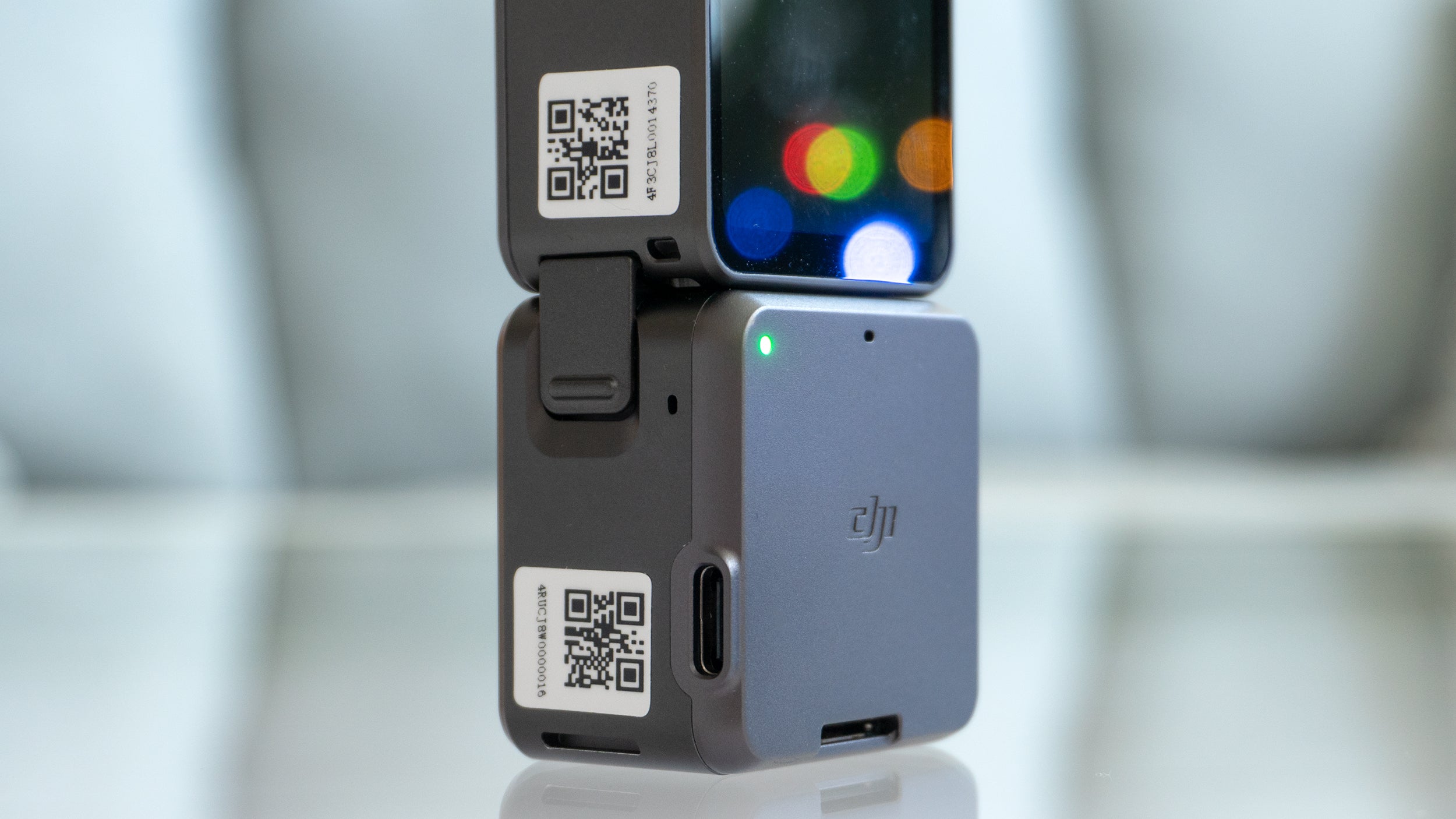
Between the arms and the magnets I don’t think there’s any chance the modules will ever unintentionally detach, short of dropping the stack onto a rock from hundreds of feet in the air. The connection is very secure, but more importantly, it adds some critical functionality to the camera module which, oddly enough, has no way to charge on its own. DJI currently sells the Action 2 in two bundles, one that comes with a Power Module that adds an additional 110 minutes of battery life, a USB-C port for charging and file copies, and a microSD card slot, and a pricier bundle that includes the Front Touchscreen Module which adds a front-facing touchscreen, extra microphones, 90 minutes of additional battery life, and a USB-C port and microSD slot.
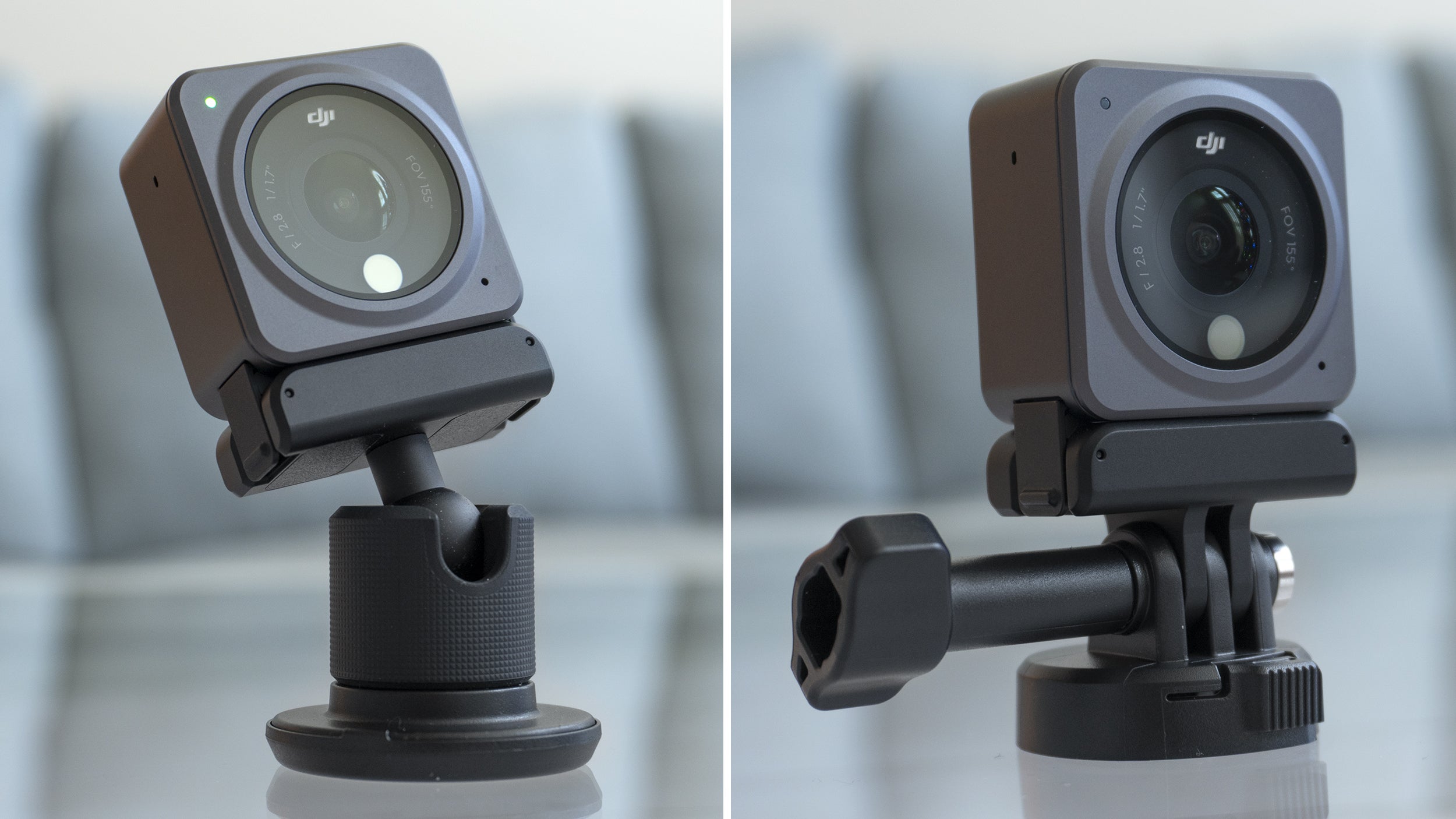
The magnetic connection system works with other non-powered accessories too, like tripod mounts and adapters for GoPro’s odd but very popular connection system.
DJI has even engineered the Action 2 to accept lens add-ons which are magnetically attached in front of its own, with a Macro Lens being the first one available for those wanting to capture footage at a closer focal distance.
There’s a tremendous amount of opportunity to expand this modular system even further, which is what makes the Action 2 kind of exciting. Multiple modules can even be stacked to create a tower of added functionality, and future modules could include everything from larger screens to better microphones with XLR connectivity, and even alternate options for live-streaming like a 5G modem.
I just wish that the camera module wasn’t so dependent on the Front Touchscreen and Power modules for basic functionality. A better approach would have been for DJI to make the camera module just a little larger to accommodate its own USB-C port and a microSD card slot so that it could stand alone as a solid all-in-one action cam, with the extra magnetic modules upgrading its capabilities even further. As it is, you’ll always have to remember to have at least one of those extra modules on hand with you most of the time you’re using it.
A Solid Shooter
Unconventional designs aside, DJI is already known for the excellent compact cameras it builds into its stabilised gimbal devices and drones, and its action cameras are no different.
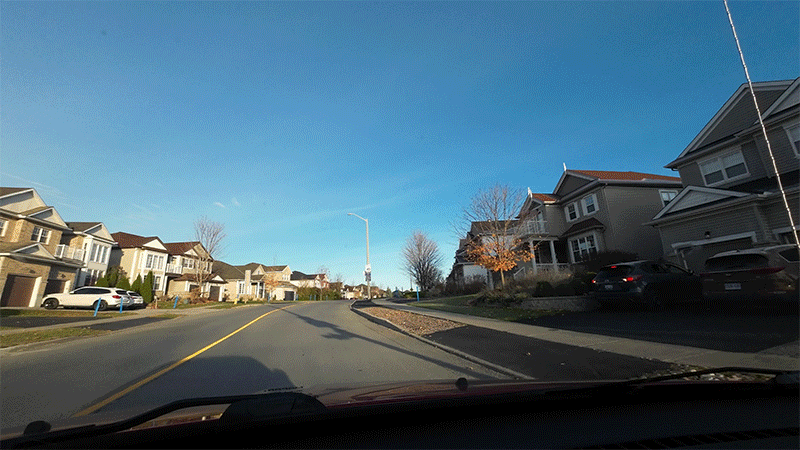
On a sunny morning the DJI Action 2 captured beautiful footage of a morning drive with excellent colour saturation, exposure, and colour temperature adjustments all handled automatically. As with most action cameras it leans toward capturing a wider field-of-view than the cameras on a smartphone will, and while you can opt to narrow that down slightly in the settings, you’ll still end with a bit of a fisheye effect. Hopefully that’s something DJI can address with additional lens add-ons later on.

Performance at night is also solid assuming you’ve got more light than just the moon illuminating your activities. With a relatively small 1/1.7-inch sensor, the camera will be boosting its ISO in the dark and noise is going to inevitably creep into your footage. The Action 2 isn’t some revolutionary night shooter, but it also doesn’t claim to be.

DJI’s software stabilisation is also still very impressive. The Action 2 doesn’t produce footage as impossibly smooth as the company’s handheld gimbal devices do, which pair mechanical and software stabilisation to cancel out nearly all bumps and jiggles. On the Action 2 there are two options, RockSteady and HorizonSteady, with the latter option offering the smoothest results, but it’s only available when shooting at 2K or 1080P resolutions so the camera has enough extra framing room. If you’re shooting in 4K, you’ll either need to rely on the RockSteady mode, or performing footage stabilisation later on in post production and frame accordingly.

Software stabilisation can only do so much to fix your footage, however. DJI includes a magnetic lanyard accessory with both Action 2 bundles that allows the tiny camera to be securely attached to an article of clothing like a shirt or jacket. Not even the aggressive HorizonSteady stabilisation mode was able to remove all the shake and jitter of a 6-year-old running at full speed, but I was legitimately still surprised at the before and after results.
A New Direction For Action Cameras?
I’m all for companies experimenting and trying to innovate, especially when offering a product in a field already dominated by the competition. GoPro has become the term most people use for action cameras, but with the Action 2, DJI is clearly hoping it can take the tried-and-true formula in a different direction and in the process make tiny action cameras more capable and flexible. Has it hit the nail on the head? I’m not entirely convinced.
The Action 2 camera module could really benefit from its own USB-C port and microSD slot as its functionality is limited without attaching the available magnetic modules — at which point you’re negating its size benefits. I do think having a new platform that allows the functionality of the Action 2 to be easily expanded and upgraded — not just through software updates — is an exciting idea, but DJI needs to do everything it can to support the platform and offer more modules and lens options sooner rather than later.
The modular approach is something we’ve seen with gadgets before, like the LG G5 expandable smartphone. But when LG decided not to release any additional expansion modules beyond what was available at launch, it effectively killed the G5’s potential, and the phone itself. If DJI can do the opposite, and clearly demonstrate why its modular approach is better by releasing a larger collection of genuinely useful modules and accessories, the Action 2 might give consumers a good reason to choose it over the GoPro.
Editor’s Note: Release dates within this article are based in the U.S., but will be updated with local Australian dates as soon as we know more.
